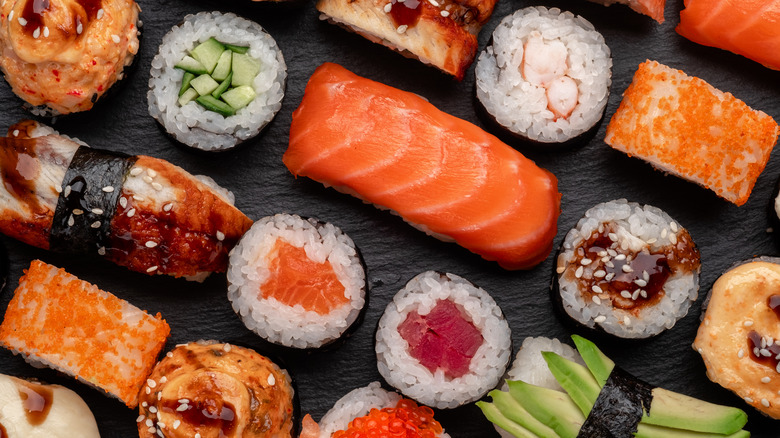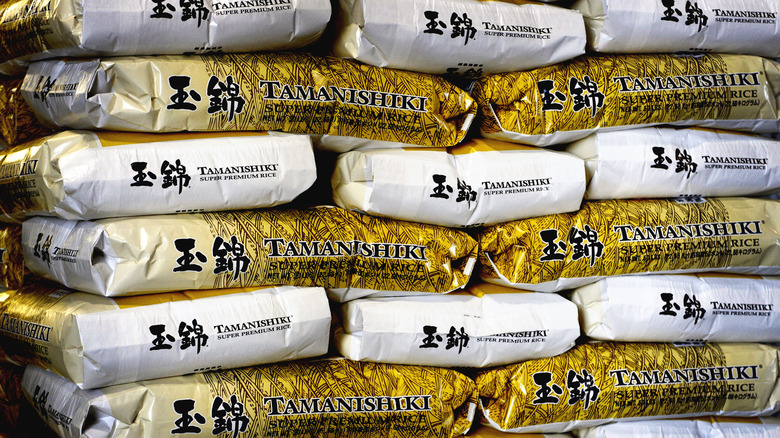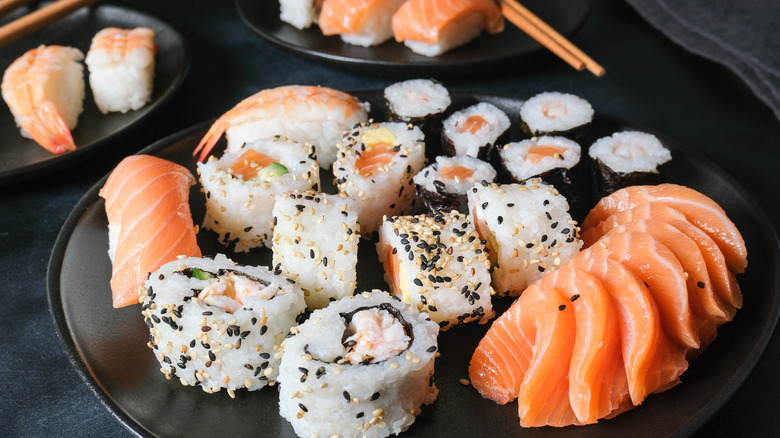The Reason Sushi Prices Are Soaring Isn't What You Think
Omakase can hardly be described as inexpensive. The meal is menu-less, and the diner is often left in the hands of the chef, who prepares individual items based on different factors, including what is fresh and available and what the diner's preferences might be. "Omakase," says "The Story of Sushi" author Trevor Corson, "is what the sophisticated customer says to the chef when settling down at the sushi bar. Sushi connoisseurs seldom order off a menu. Traditionally, sushi bars in Japan didn't even have menus" (via Michelin). As such, omakase diners are usually prepared to pay a considerable amount of money for a good meal.
But if you haven't enjoyed an omasake in a while and are itching for the experience, it may be a good idea to call ahead and find out whether prices at your favorite sushi restaurant have changed. Thanks to a number of problems, your omakase (which may have already carried a hefty price tag) could well have become pricier.
We all expect to pay a premium in order to enjoy high-quality fish that is so fresh it can be eaten raw, with little embellishment other than soy sauce and a smear of fresh wasabi. Unfortunately, restaurants are having to adjust the prices of their sushi; not just because seafood is expensive, but because there is a diminishing supply of sushi rice, which is used to prepare many types of sushi — from nigiri to uramaki to temaki (via Delishably).
California's drought has triggered a sushi rice shortage
Part of that problem is rooted in the historic drought that has gripped California for years. About 40% of the state's precious water supply is used on farms, and rice, according to Bloomberg, is one of agriculture's thirstiest crops. Thanks to diminishing water supplies, California's rice plantings were said to be "the smallest in almost three decades." Fewer rice plants translate into lower yield harvests, and in August 2021, rice farmers were expecting to get $22 for every 100 pounds of medium- and short-grain rice — more than they have seen for their crops in the last 13 years. These price hikes are leaving sushi bar owners like Tony Gentile more than a little worried. "Prices now fluctuate day to day more than any other time that I can remember, and I have been in the restaurant business for more than 20 years. It's scary," he says.
The sushi rice shortage isn't just happening in the U.S., it's being seen in Europe, as well. Food Service Equipment Journal says freight costs have skyrocketed by about 19% and raw materials by 35% due to tight demand since September 2020, which means the wholesale cost of rice is expected to skyrocket too.
Sushi prices are also up in Europe
Once upon a time, shortages would have been easily fixed by sourcing items from one part of the world, and having them brought to where they were needed. But supply chain problems triggered by the coronavirus pandemic have resulted in stalled shipments and shortages, making sushi rice even more expensive than it already is. "Europe does not grow enough rice to fulfil demand and so it is topped up with rice from the rest of the world — but this year they will also have a massive shortfall due to freight and logistical issues," Eurostar Commodities director Jason Bull says (via The Grocer).
Na Wang, marketing manager for Tazaki Foods, adds that Brexit has created an additional issue in the U.K., as most of the sushi rice is sourced from Italy and now needs "additional paperwork" to be imported.
In the U.S., sushi chef Seizi Imura tells Boston.com that a combination of staffing and ingredient shortages have left him with no choice but to raise prices. "It's just the squeeze," the chef said. "Everyone is getting squeezed here. It's definitely going to be the consumer that has to pay for it."


